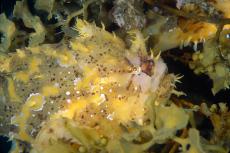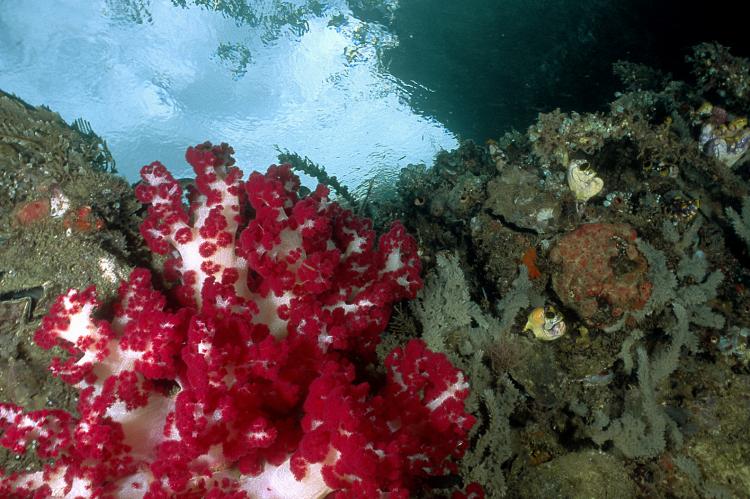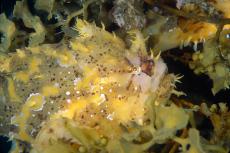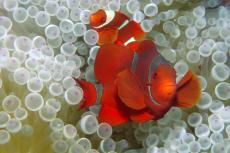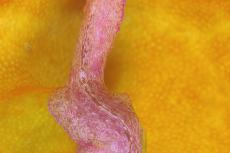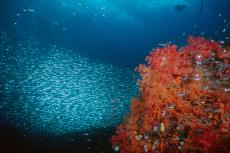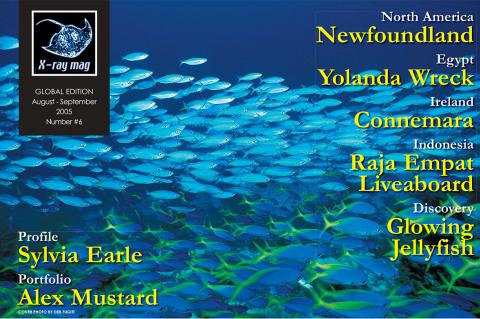Raja Ampat
Raja Ampat in Indonesia is dotted with tiny islands scattered like beads across an area of sea and surrounded by large platform and fringing reef systems.
Tags & Taxonomy
Areas of mushroom shaped rock islands seem to harbour some of the better dive sites and make for beautiful and interesting topside scenery as well. This area is destined to become a World Heritage Site.
Dr Gerald Allen declared recently that “Raja Ampat represents the bulls-eye of biodiversity in coral reefs” and recommended “we protect the reef at all costs, because it represents the baseline to which all other reefs in the world be compared.”
Raja Ampat is considered remote. Located off the Northwest “Bird’s Head” Peninsula of New Guinea Island, Raja Ampat is a cluster of over 1500 small islands, bays and shoals surrounding the four islands of Misool, Salawati, Batanta and Waigeo. Named after the “Four Kings” of these islands, Raja Ampat is a part of the West Papua province of Indonesia which was formerly Irian Jaya and is now its own district with its own government.
“Remote” depends on your definition. While much of the area is unexplored, it is easy enough to fly by jet into the local Sorong airport from Manado or Makassar (Ujung Pandang) where you are collected by ship to travel an hour or so to the diving areas. Bear hugs and big fish
“Michael!” We cried out in unison as we hopped aboard SMY Ondina, our liveaboard home for the next month. Stepping agilely across the deck, sidestepping bewildered looking new passengers, crew and luggage, Michael reached my companion, Tony, quickly. Wrapping his powerful arms around Tony’s waist, Michael hoisted Tony in a giant bear hug spinning him effortlessly in a circle while carrying him across the deck. A joyous reunion with an old friend portended great adventures for our first liveaboard charter in the Raja Empat islands.
When Tony Matheis and I began coming to Raja Ampat in ’99, it was Michael who, after two weeks of so-so diving with other guides, put us into the water in the conditions that we now recognize as optimal for seeing the reefs and fish life at their finest. Opting for diving with him from a longboat instead of with the other tourists on the dive boat was the best decision I had made in years.
Michael has an uncanny ability to know the conditions underwater, where the fish are schooling and the direction and force of the current, all necessary skills to get the most out of a dive in the current-swept areas of the enormous reef systems in this hot new dive destination. Thanks to his years of experience in the area, we came home with some of the best images in years.
Our guide dropped us into immense schools of Pale or Blue Tail Surgeonfish. As we plunged headfirst toward the bottom we scattered huge schools of bannerfish ....
(...)
Download the full article ⬇︎
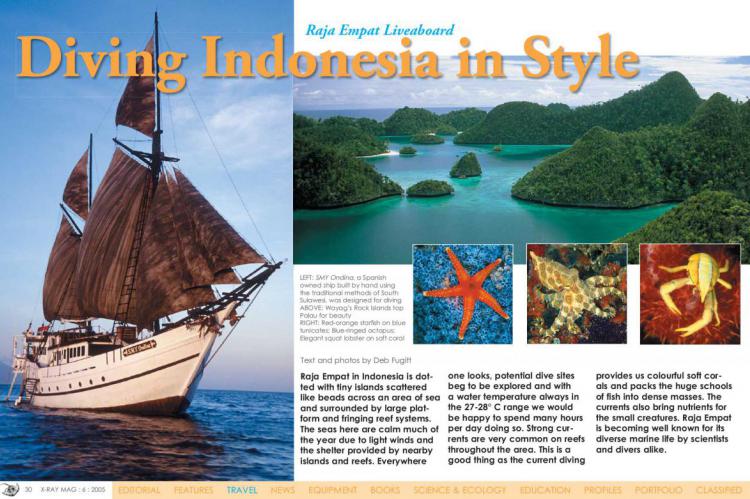
Originally published
X-Ray Mag #6
New Foundland, Canada. Raja Ampat, Indonesia. Marine Insects - walking on water. Glowing Jellyfish. Diving rebreathers, what is it like? Ireland's Connemara. A visit to Cressi-Sub. Technical Matters: Tables vs Computers. Profile: Sylvia Earle. Yolanda Wreck - where did she go? Portfolio: Alex Mustard






